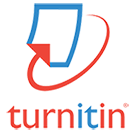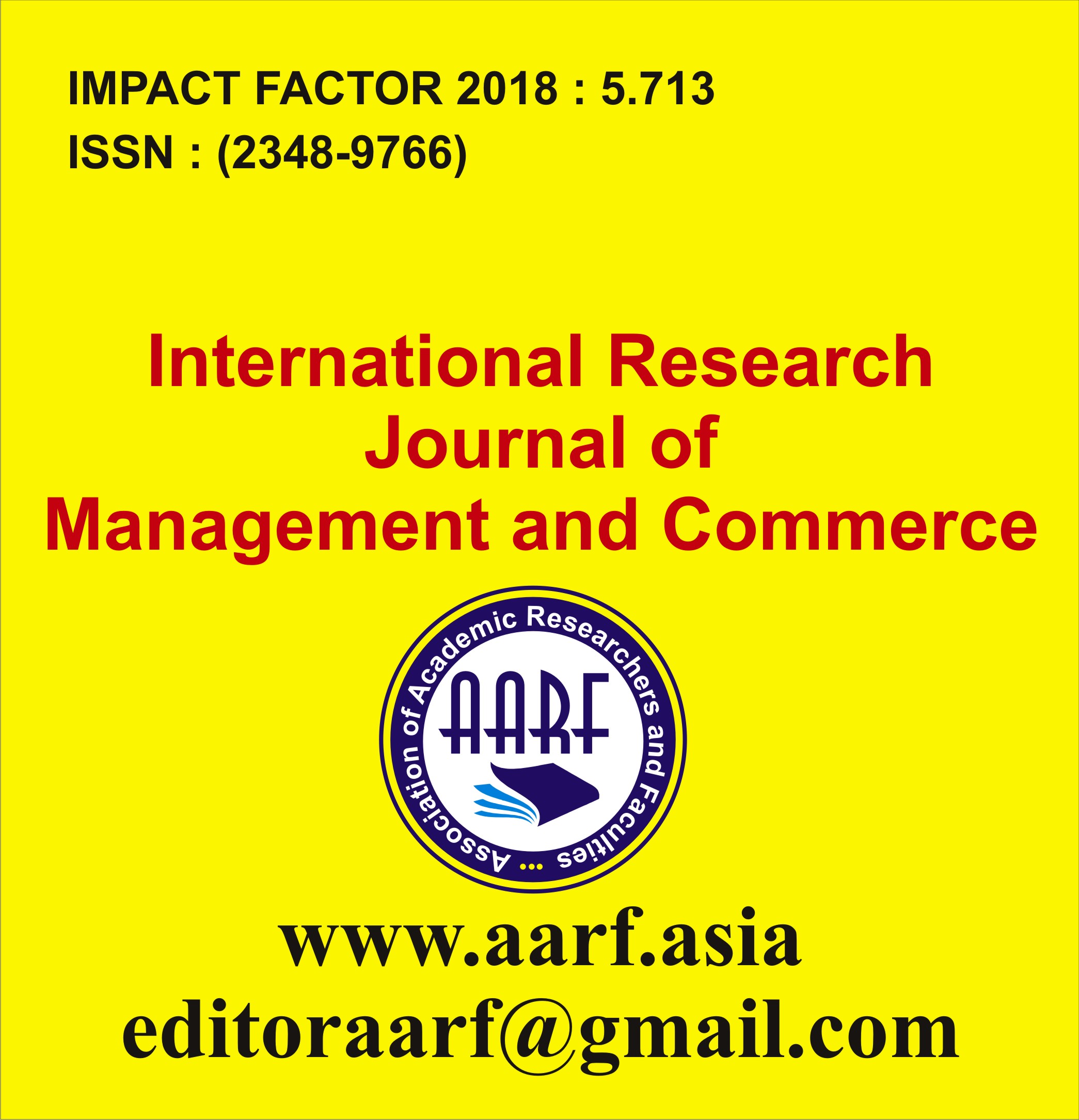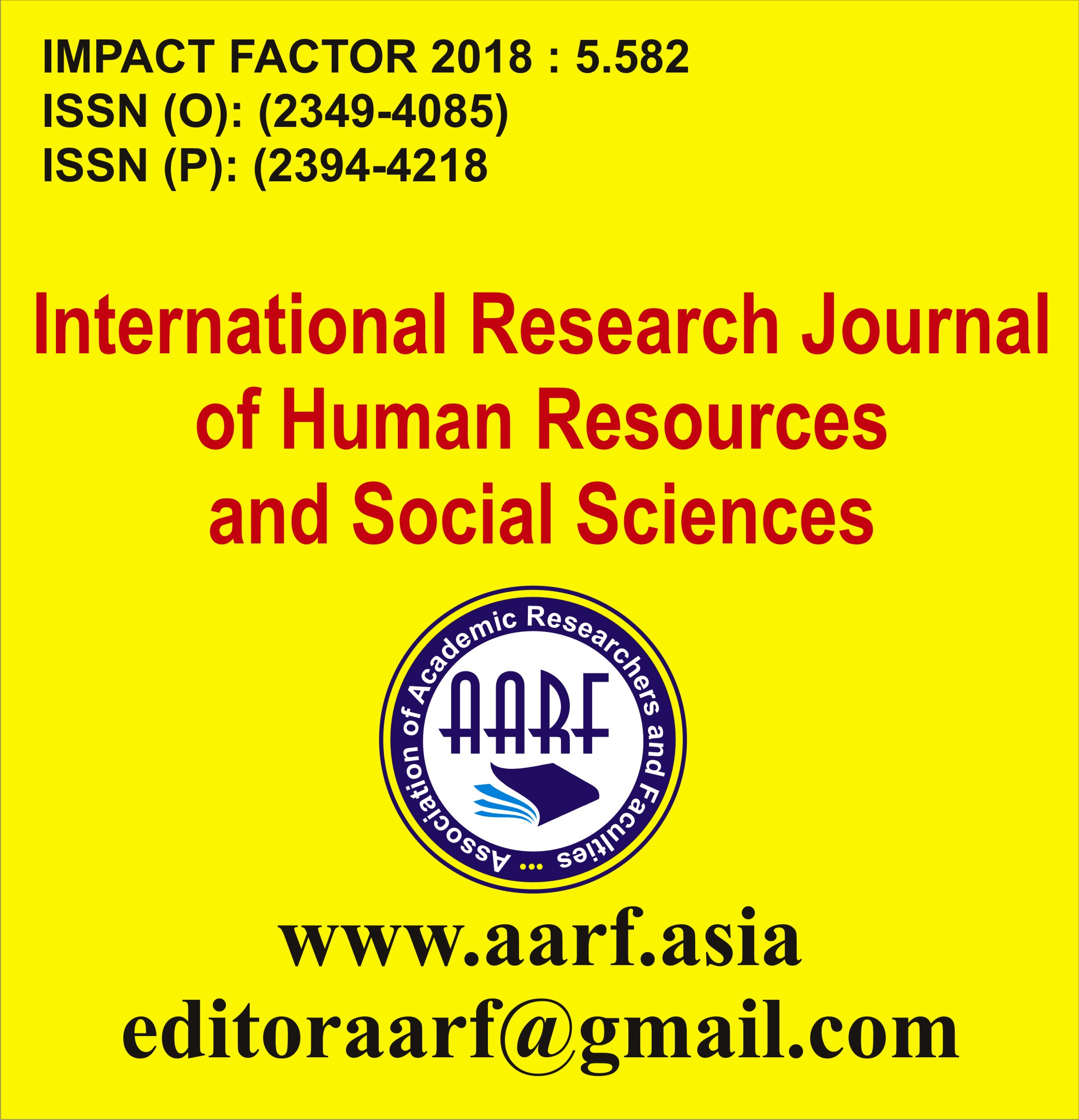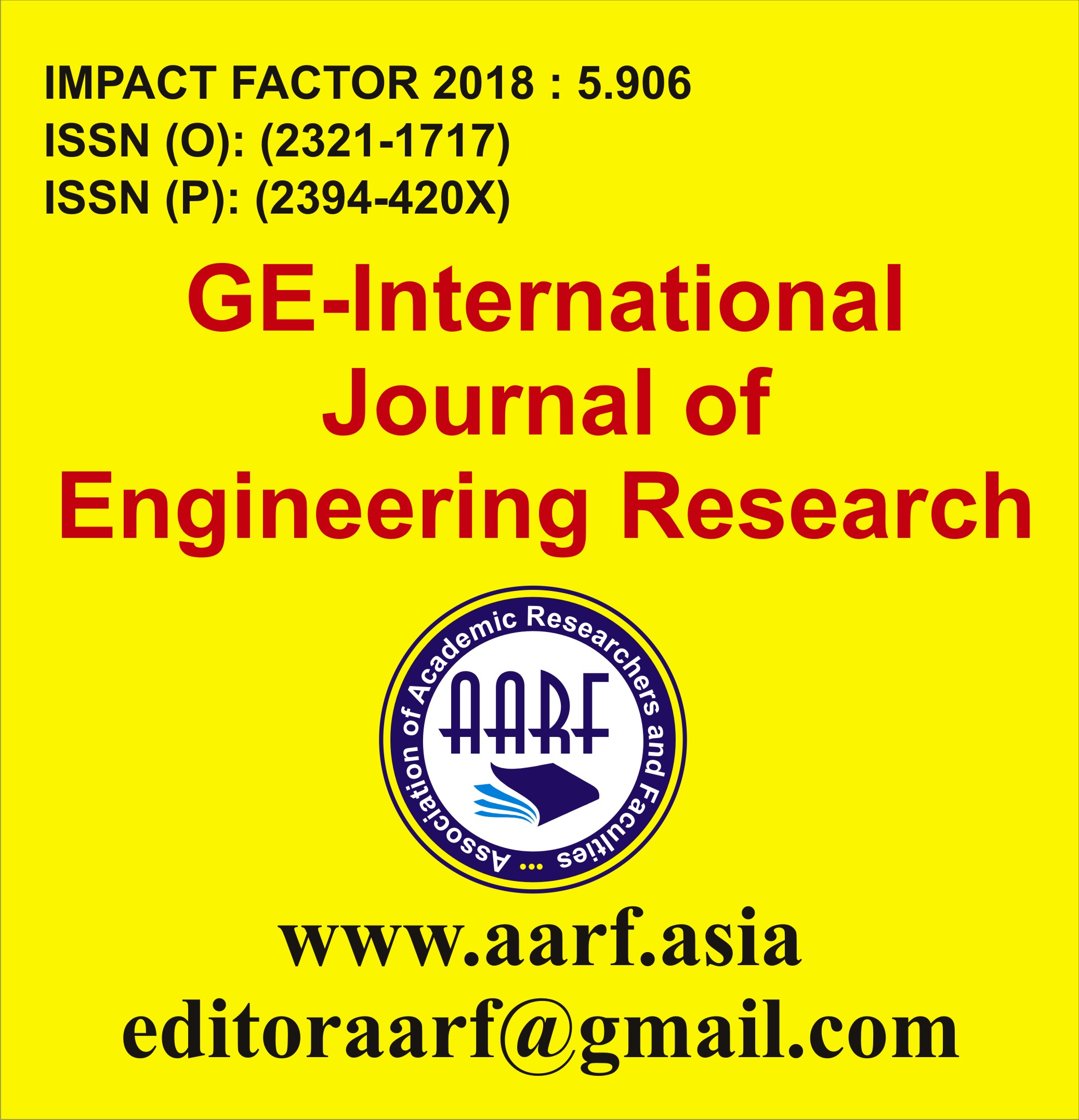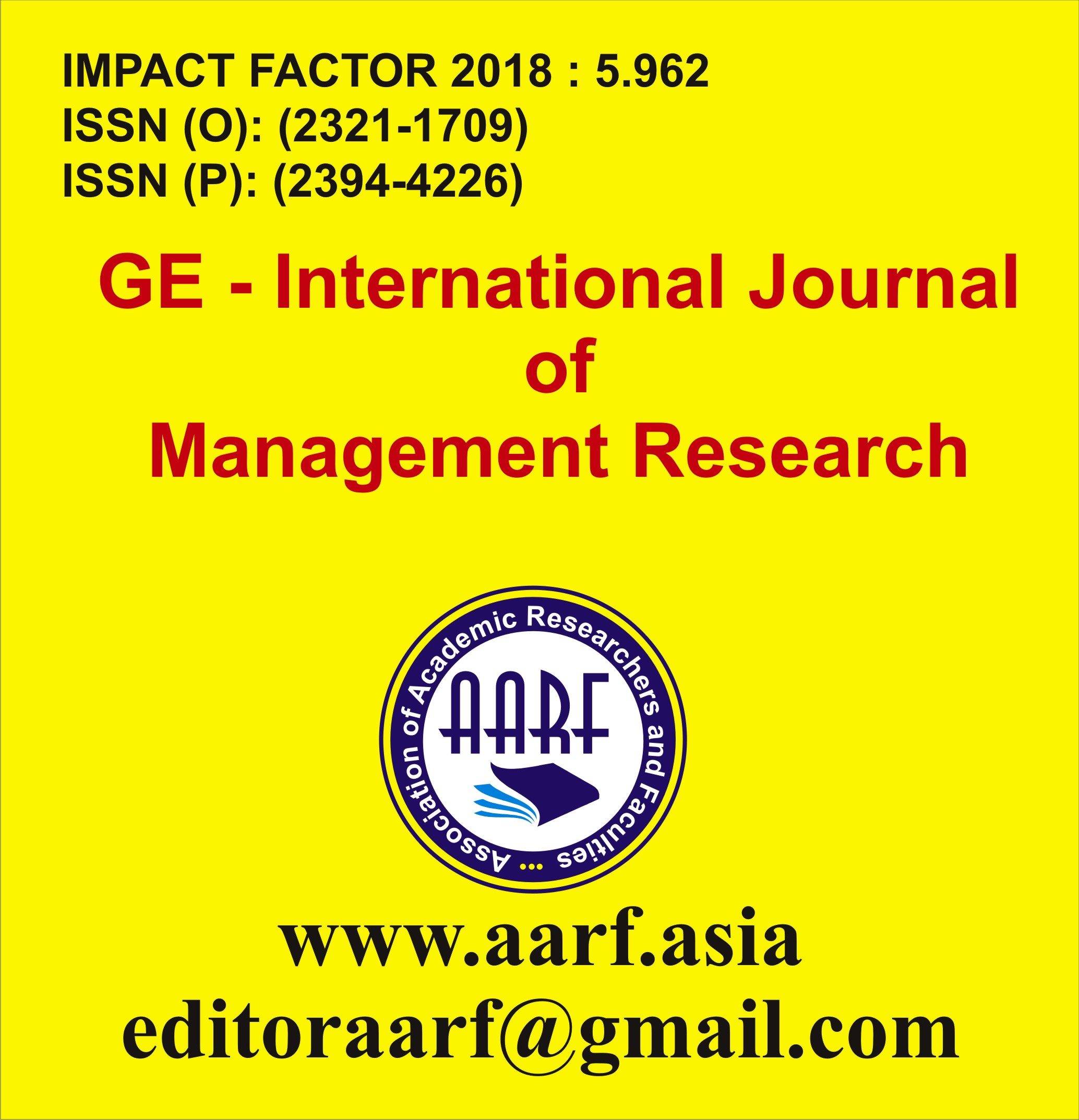
- Current Issue
- Past Issues
- Conference Proceedings
- Submit Manuscript
- Join Our Editorial Team
- Join as a Member

| S.No | Particular | Page No. | |
|---|---|---|---|
| 1 |
Dr. Swarupa BhattacharjeeAbstract: Although ‘Barak Valley’ politically formed a part of Assam since 1874, yet the region has developed a distinct demographical identity from the rest of the state, especially from ethnic as well as linguistic view point. From the previous census reports it has been established that throughout the colonial rule, the Bengalees constituted linguistic majority in Cachar district. Not only that, they seemed to be successful in establishing a socio-cultural dominance over the valley along with a distinct linguistic identity. In 1947, India became independent but it came along with the partition of the country. As a result of the partition, the major part of the Sylhet district was transferred to East Pakistan and Cachar district remained the only Bengalee dominated district all over Assam. Moreover, numerical strength of the Bengalees had a sudden decrease in the state. The same census report also shows that the numerical strength of the Assamese speaking population in Assam had a remarkable increase. The new political arrangement and the great demographic change brought some far-reaching consequences for the state. A strong ethno-linguistic sub-nationalism swept over the whole upper Assam popularly known as Brahmaputra Valley and a tendency developed by the initiative of the elite of the linguistically majority group of Assam to establish Assam as a unilingual state by any means. Under such situation, Bengalees became very keen to safeguard their ethnic and linguistic identity in the state and took all resorts to protest against this aggressive nationalism. Thus, an ethno-linguistic dichotomy seems to have developed in Assam particularly between the educated sections of the two predominant communities of the state. |
|
1-8 |
| 2 |
Krishan KumarAbstract: Chitra Banerjee in her text, The Forest of Enchantments narrates the story of Sita and her voice that seems different from the epic Ramayana. She is considered as one of the prominent female characters in Indian mythology. The text shows not only the spiritual journey of Sita but also redefines her identity through various dimensions of her life. The novel explores Sita as a human figure not a divine power as mentioned in Indian epics especially in Ramayana, and her enormous strength and courage while living in the amidst the unfamiliar, haunted and mysterious forest. The study is an attempt to examine the relationship between Sita and the nature through the lens of animism and deep ecology. In the narrative the forest serves as an essential source of empowerment to her. In Divakaruni’s narrative, nature embraces Sita as a source of power that empowers her to speak for self-identity. |
|
9-12 |
| 3 |
Bachan Kaur Dr Umed SinghAbstract: In the present era, where the world is facing severe environmental challenges, it's essential to understand how the young generation becomes aware of and responds to these challenges. The paper aims to argue that cognitive development plays a vital role in shaping children's thinking and understanding of the world around them. The analysis applies Piaget's and Vygotsky's cognitive development theories to examine the environmental consciousness among children by using the insights from the novel The Little Rainmaker. This novel is set in a dystopian world where resources are scarce, and the environment has deteriorated so much that there has been no rain for ten years. It serves as a backdrop to analyze the cognitive growth and ecological understanding of the 10-year-old protagonist, Anoushqa. By examining these theories, the study demonstrates that both nature and nurture are essential in developing environmental consciousness among children. Anoushqa’s ability to understand and act on ecological threats is shaped by a combination of her natural cognitive abilities and the physical environment that surrounds her. Anu’s understanding of the world comes not only from her biological growth but also from her social interactions with others and the cultural context in which she lives. |
|
13-20 |
| 4 |
DR.AMRITA DUTTAAbstract: The period from 68 AD to 600 AD in India was marked by significant developments in art and architecture, reflecting the complex social, political, and cultural dynamics of the time. This era saw the rise of regional powers, the flourishing of trade, and the patronage of various religious traditions, particularly Buddhism, Jainism, and Hinduism. These factors contributed to a rich artistic heritage characterized by diverse styles, techniques, and themes. |
|
21-24 |
| 5 |
Mayank Raiwani, Dr. Parul AggarwalAbstract: It is a common saying about India that “Unity in Diversity” along with Indian’s are highly devoted to their culture and know the good etiquette to maintain social relationships. In India people believe in priest and they think priest as a bridge that connect them with God. Priests are very important because they make sure that the religious practices are done correctly, just as they have been for a long time. They know the Vedas and other holy writings very well, which helps them to make sure every ceremony is done the right way. In the same way the novel Samskara is an accurate estimate of the brahmin societies of all times which suffer the serious problems of backwardness despite having intellectuals among them. Reason behind all silly problems that emerge is that their energy is directed by age-old convictions, beliefs, customs, traditions and superstition. Ananthamurthy raises questions on very sensitive issues like rituals, Samskara, Caste, modernism, community opinions. He scans human weakness such as greed, sex, gluttony, and lack of human concern in the Brahmin community. Ananthamurthy’s characters favour freedom from the life in shackles of ritualistic performances. His novels shows that every person was born with samskaras, or mental and emotional patterns they had inherited through the karma they created throughout their past lives along with scriptures and different cultures traditions of India. The present paper analyses and summarize the cultural crisis, modernity and changing rituals in Indian Society on the behalf of Anathamurth’s Samaskara(1965) and Ghatasharddha. |
|
25-29 |
| 6 |
Ms DeepaAbstract: This study examines the integration of Aristotle's rhetorical triad—ethos, pathos, and logos—into modern English Language Teaching (ELT) methodologies to enhance students' writing skills. Through a mixed-methods approach, the research investigates how these classical principles can be effectively employed within contemporary frameworks such as Communicative Language Teaching and Blended Learning. The findings demonstrate that strategic implementation of Aristotle's elements significantly improves students' ability to construct persuasive, well-structured, and engaging written content. Case studies reveal enhanced source evaluation, audience awareness, and argumentative coherence. The paper concludes with recommendations for formalizing rhetorical training in ELT curricula and suggests avenues for future research. |
|
30-39 |
| 7 |
कैप्टन. डॉ. अम्बेकर बाबूरावAbstract: मीरा का काव्य उन विरल उदाहरणों में हैं जहाँ रचनाकार का जीवन और काव्य एक – दूसरे में घुल मिल गए हैं, परस्पर के संपर्क से वे एक-दूसरे को समृद्ध करते है | भारतीय और पाश्च्यात्य नारी विमर्श का फलक कितना व्यापक एवं विविध है | जहाँ पाश्च्यात्य नारी विमर्श बहुत ही संगठित एवं सशक्त दिखलाई पड़ता है वहीं भारतीय नारी विमर्श भारतीय परिवेश एवं संस्कृति में बहुत ही जटिल तथा असंगठित दिखलाई पड़ता है | इसका मूल कारण यह है कि भारत विविध धर्मों, भाषाओं जतियों का विकासशील देश है | इसमें प्रत्येक धर्म, जाति एवं वर्ग की स्त्रियॉं की अलग-अलग गंभीर समस्याएँ हैं | इनके विरुद्ध कुछ हद तक इन विभिन्न धर्मों, जतियों एवं वर्गों की उच्च शिक्षित महिलाएँ अपने-अपने स्तरों पर खड़ी होती है | |
|
40-45 |
| 8 |
Nidhi Prakash, Oshdhish Pati Bhushan ShuklaAbstract: Artificial intelligence has the potential to transform public policy by enhancing efficiency, improving decision-making, and providing personalized services. However, the integration of AI into public policy also raises significant ethical challenges related to bias, accountability, transparency, and privacy. This research paper explores the dual nature of AI in public policy, examining both the potential benefits and inherent risks associated with its deployment. The study analyses the challenges and opportunities of leveraging AI in public administration, with a focus on ethical considerations. While AI's capabilities in automating tasks, analyzing data, and providing predictive insights can optimize government operations and service delivery, the implementation of AI also raises critical concerns, such as algorithmic bias, lack of transparency, and accountability issues. To harness the power of AI while mitigating potential risks and upholding ethical principles, collaboration between stakeholders and the development of robust regulatory frameworks are crucial. This paper aims to provide insights into how governments can navigate the complexities of AI in public policy and ensure its responsible and equitable deployment. |
|
46-54 |
| 9 |
Dr. Jitendra Deo DhakaAbstract: Toni Morrison\'s A Mercy, set in the late 17th century American colonies, delves into the nascent stages of the transatlantic slave trade and other forms of human bondage, painting a complex picture of a society grappling with the concept of ownership and the brutal realities of exploitation. While not as centrally focused on the established racialized chattel slavery of her later novel Beloved, A Mercy powerfully portrays the insidious beginnings of this system and its profound impact on individuals and communities. The novel showcases a fluid and often brutal landscape of human trade. Florens, the central figure, is given as payment for a debt, highlighting the commodification of human life. Her mother\'s desperate act, driven by a desire to protect Florens from the sexual predation of their owner, underscores the lack of agency and the constant threat of violence faced by enslaved people. This act of \"mercy,\" twisted by the dehumanizing context of slavery, sets the stage for Florence\'s yearning for connection and her struggle for self-worth in a world that views her as property. Morrison expands the scope of human trade beyond the African slave trade. The novel features Lina, a Native American woman enslaved after the decimation of her tribe by disease, and Sorrow, a white indentured servant whose past is shrouded in mystery and trauma. These characters highlight the diverse forms of bondage prevalent in the early colonies, where race was not yet the sole determinant of enslavement. Their shared experiences of loss, displacement, and forced labor underscore the pervasive nature of exploitation and the fragility of human dignity in this formative period.\r\n |
|
55-61 |
| 10 |
Seema Rani Dr Joginder singhAbstract: This paper explores the evolution of female identity from silence to selfhood in selected works by Angela Carter and Alice Walker. Through a comparative literary analysis, it examines how both authors portray women’s journeys toward empowerment within oppressive social structures. Angela Carter subverts traditional fairy tales and Gothic tropes to challenge patriarchal norms, presenting heroines who reclaim agency through defiance and self-discovery. In contrast, Alice Walker grounds her narratives in the lived realities of Black women in the American South, emphasizing the intersectionality of race, gender, and class. Her protagonists break their silence through personal resilience and the transformative power of female relationships. Despite differences in cultural context and literary style, both Carter and Walker depict the reclamation of voice and identity as central to women’s liberation. The paper concludes that their works offer enduring insights into the universal struggle for female selfhood, highlighting the importance of solidarity, resistance, and narrative reclamation in the ongoing pursuit of gender equality. |
|
62-69 |
| 11 |
Seema Dr Joginder SinghAbstract: This research paper offers a comparative analysis of the portrayal of women's struggles in the novels of Kamala Markandaya and Anita Desai, two prominent voices in Indian English literature. By examining selected works from both authors, the study explores how socio-cultural, economic, and psychological factors shape women’s experiences of marginalization. Markandaya’s novels primarily highlight the external hardships faced by women, such as poverty, tradition, and familial obligations, while Desai delves into the inner landscapes of her female characters, focusing on their emotional turmoil, alienation, and quest for self-identity. Through close textual analysis and thematic comparison, the paper reveals the commonalities and divergences in their literary representations of women’s resilience and agency. Ultimately, the study underscores the significance of these narratives in broadening our understanding of women’s voices from the margins and their relevance to contemporary feminist discourse. |
|
70-78 |
| 12 |
Sneh VatsaAbstract: T. S. Eliot—considered widely to be the single most important poet of the twentieth century—had a strong fascination for dealing with time as a poetry subject in his works ranging from Prufrock to Four Quartets. As being an erudite student of philosophy during his years as an undergraduate at Harvard, and later at Sorbonne and Oxford, his philosophy of ‘time’ drew heavily from the influences of Henri Bergson, |
|
76-83 |
| 13 |
Manisha Dr. Joginder SinghAbstract: This paper examines the theme of adulthood and its inherent struggles in Ernest Hemingway’s short stories, focusing on the psychological and emotional conflicts faced by his characters. Through close readings of "A Clean, Well-Lighted Place," "The Snows of Kilimanjaro," and "Hills Like White Elephants," the study explores how Hemingway’s minimalist style and sparse dialogue reflect the internal turmoil experienced during the transition from adolescence to adulthood. The analysis highlights key moments of personal realization and disillusionment, revealing how characters grapple with existential uncertainty, the inevitability of aging, and the pain of loss. By situating these stories within Hemingway’s broader literary themes, the paper argues that his portrayal of adulthood is marked by a profound sense of vulnerability, ambiguity, and resilience, offering enduring insights into the complexities of the human condition. |
|
70-75 |
| 14 |
Swati Suman, Dr. VinamrataAbstract: "In this universe, every object is nothing more than a reflection of another. The Sundarbans have always been a mirror for me, one that reflects not just my face but also my soul."(Ghosh 211) This paper explores the intricate interplay between nature, spirit, and self in Amitav Ghosh's The Hungry Tide, positioning it within the framework of eco-spirituality. The novel, set in the ecologically rich yet perilous Sundarbans, presents a narrative where the natural environment is not just a backdrop but a dynamic force that shapes human experiences and spiritual reflections. Through the lives of its diverse characters, The Hungry Tide examines the profound connections between humans and the natural world, illustrating how these connections influence individual identities and spiritual consciousness. The research delves into how Ghosh intertwines ecological |
|
84-93 |
| 15 |
Dr. Saraswati KumariAbstract: In home science, the relationship between life environment and health is crucial. Understanding how factors like nutrition, cleanliness, organization, and emotional well-being impact health within the home environment is central to the field. It involves studying how to create healthy living spaces, promote balanced diets, manage stress, and maintain hygienic conditions to support overall well-being. Life environment and health in home science is crucial because it encompasses the study of how our living spaces, daily routines, and habits impact our overall well-being. It teaches practical skills for maintaining a healthy home environment, which is essential for physical and mental health. Understanding how to create a safe, clean, and nurturing space can prevent illnesses, promote good nutrition, and enhance quality of life for individuals and families. |
|
94-102 |
| 16 |
Raj Kumar Hansh Dr. Uday Kumar MishraAbstract: The Caribbean region, deeply affected by centuries of colonial rule, has seen its literary landscape significantly shaped by the legacies of colonialism. This article discusses in depth the impact of colonialism on Caribbean literature, with a focused analysis of the works of George Lamming, an essential figure in the Caribbean literary senario. Lamming’s narratives embodies the complexities of post-colonial identity, cultural dislocation, and self-discovery within the remnants of colonial domination. |
|
103-106 |
| 17 |
Dr. Mithilesh ChakrabortyAbstract: This paper explores Rākhal Sebā or Āi Pūjā, an almost extinct folk ritual once prevalent in the rural areas of Barak Valley. Rooted in agrarian life and the pastoral culture of the region, this ritual centred on the worship of Lord Krishna as the divine cowherd, performed collectively by village boys who tended cattle. Unlike Brahmanical forms of worship, Rākhal Sebā was entirely non-ritualistic in the orthodox sense, devoid of priests, sacred icons, or Vedic mantras. It embodied a purely emotional, intimate relationship between cowherds and their deity, shaped by everyday agricultural needs and local cosmology. The study examines the ritual’s structure, associated folk songs, community participation, oral traditions, and symbolic practices, highlighting how modernisation and the decline of agrarian labour have led to its near disappearance. By documenting this vanishing practice, the paper underscores the importance of preserving intangible cultural heritage in the Barak Valley. |
|
107-109 |








